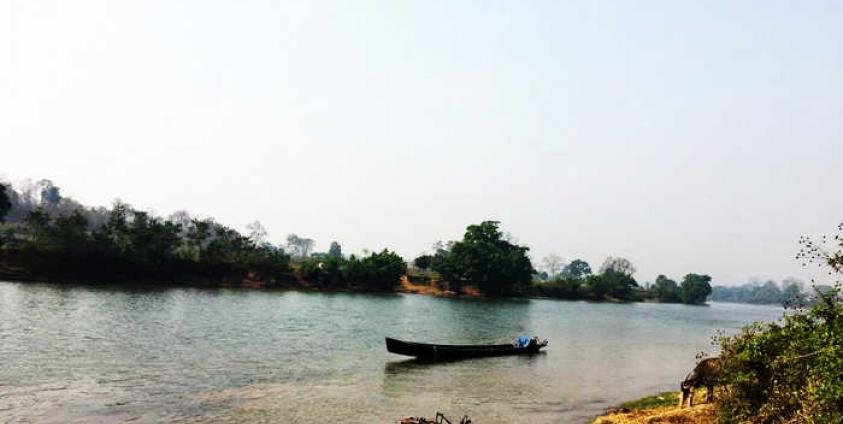A series of four dams, three of which will be in conflict zones, planned for the Namtu (Myitnge or Dokhtawaddy) River in northern Shan State are the subject of strong opposition from environmentalists and activists.
A recent report released jointly by the Shan Human Rights Foundation (SHRF), the Shan Sapawa Environmental Organisation and the Shan State Farmers’ Network, titled “Save the Namtu River,” argues that that there has been a complete lack of transparency around plans to construct the dams.
Combined with the existing Yeywa dam, the four new dams will obstruct more than half of the Namtu River, which the report says will have an effect that will be “irreversibly impacting” for the Namtu River's ecology.
In a press release accompanying the report Sai Khur Hseng of Shan Sapawa said: “For Naypyidaw to push ahead with large dams in conflict zones, against the wishes of local ethnic communities, is thumbing their noses at the peace process.”
He added: “If the new NLD-led government wants to build peace, they must immediately halt the dams on the Namtu and other rivers in ethnic conflict zones.”
Shortly after the report was released Aung San Suu Kyi's opted to relinquish the role of Minister of Energy and Electric Power. A position that was instead given to Pe Zin Tun, an ex military officer and a former employee at the state owned Myanma Oil and Gas Enterprise (MOGE). It remains unclear if the long-time government official will be more responsive to the concerns of community groups than his predecessor.
Of the four dams slated for the Namtu, the Upper Yeywa Dam in Nawngkhio Township, which began in 2008, is the closest to being completed. The dam is slated for completion in 2018, when finished it will create a reservoir that will be at least 60 kilometers long and, according to the report, will wholly submerge Ta Long a Shan village of 500 people. Parts of Hsipaw Town may also be affected.
According to the report residents of Ta Long “were never informed or consulted before the dam began, and have insisted they do not want to move”. The report suggests that both the environmental and social impacts of the dam were a complete afterthought for the firm's involved as the dam's Environment and Social Impact Assessment (ESIA) was controversially completed in 2014, some six years after construction of the dam had already begun.
The dam, which is being funded by China's state backed Exim Bank, is being built by China’s Zhejiang Orient Engineering Co., Ltd. who serve as the engineering, procurement, and construction (EPC) contractor. This means that Orient Engineering Co. has overall responsibility for the dam's construction and is overseeing the entire project including the design, procurement, construction, commissioning and then the handover of the project to the end user, the state run Myanmar Electric Power Enterprise (MEPE).
Other firms involved in the project as subcontractors are the Chinese firms Yunnan Machinery Import and Export Co. Ltd, Lahmeyer International GmbH of Germany and the Swiss company Stucky SA. A Chinese subsidiary of the Japanese conglomerate Toshiba called Toshiba Hydro Power (Hangzhou) Co., Ltd will provide the generators and related equipment for the dam.
Norwegian Firm Going Ahead with Middle Yeywa Dam Despite Quake Risk
Another of the Namtu dams known as the Middle Yeywa dam is set to be built in a location identified by the report as “seismically hazardous” because it is close to the Kyaukyan fault line. According to the report this was the location of the biggest earthquake known to have taken place in Burma's history in 1912. The quake which struck Nawngkhio is estimated have been an 8 on the Richter scale.
A state owned Norwegian power firm, known as Statkraft Norfund Power Invest or SN Power, is going ahead with plans to build the 700 megawatt dam. The MOU for this dam was signed with the previous government in July 2014. A pre-feasibility study for the dam began in April 2015.
The involvement of a Norwegian state owned firm with such a controversial project has drawn the ire of the groups behind the report. The report notes that Norway, who are a significant donor to Burma's ongoing peace process, is “opportunistically partnering with Naypyidaw to profit from ethnic conflict areas before peace has been reached.”
Similarly, Japan and Switzerland, who are also significant donors to the peace process, have firms from their country involved with the Namtu dams.







